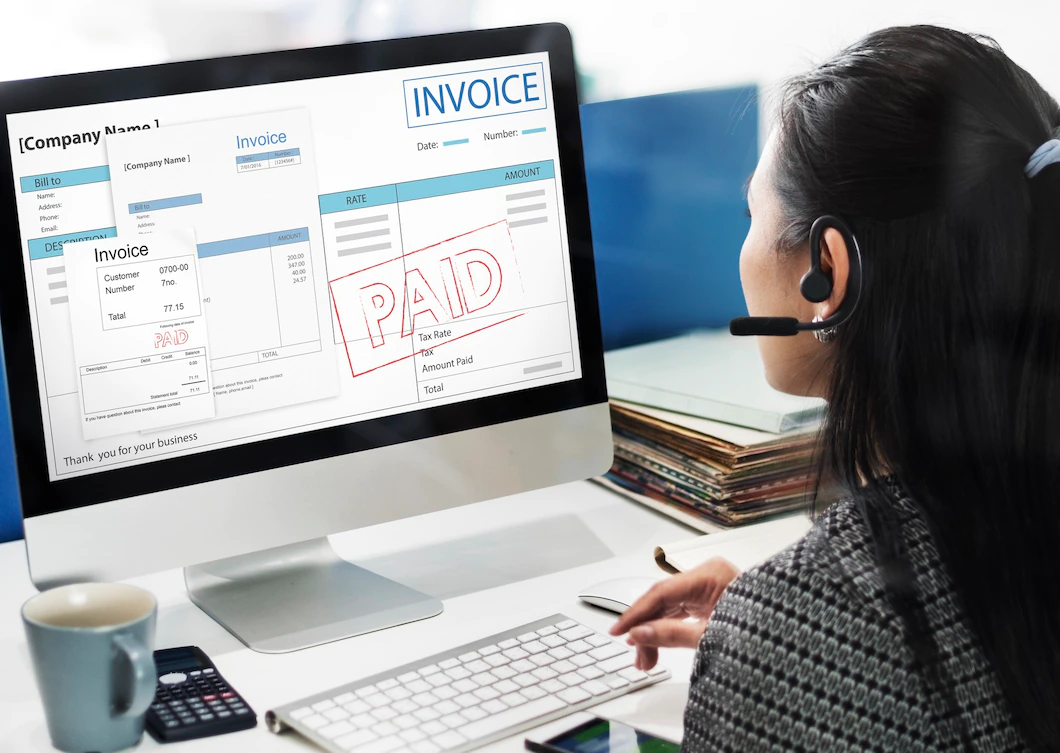Have your clients’ invoices passed? Have you tried sending them a follow-up email? Stay with us if you haven’t sent past due invoices. Learn how to write and ask clients for payments with these past due invoice email sample.
What are past-due invoices?

An invoice that has not been paid within the agreed-upon timeframe is a past-due invoice. This can lead to many negative consequences, including lost business, late payment fees, and reduced credit ratings. As a result, it is essential to always keep your invoices up-to-date, so you do not miss any deadlines. Additionally, make sure to send proper notifications when an invoice is due. This will help avoid confusion or stressful situations with clients/ vendors.
Suppose you notice that one of your customers isn’t paying their bills on time. Then, be proactive and reach out to them directly rather than waiting until they become delinquent. Showing transparency and communication will help reduce misunderstandings and strengthen business and customer relationships.
How To Write Past Due Invoices In 5 Steps?

If you are like most business owners, your days start early and don’t end until late. This leaves little time for managing paperwork and paying invoices on time. Here is a simple 5-step process that can help you to write past due invoices in record time:
1. Get organized
Once you have created an invoice template, it will be much easier to manage your outstanding receivables. Just by quickly entering the pertinent information into the templates. Remember to include any notes or explanations related to your invoice; so there is no confusion later on down the line.
2. Create a timeline
When writing past-due invoices, make sure that each one has a specific date by which it should be paid in order not to incur penalties from your credit card company or financial institution.
3. Include All Invoice and Payment Details
You can include your invoice and payment details in past-due invoices by adding them as attachments. We will make it easier for customers to understand what is owed, when payments are expected, and how to reach us if there are any questions or concerns. When creating an attachment, use the correct file type (pdf, Docx) to upload correctly. You can also add a note with your payment information if you’d like.
Once your invoice and payment details have been added, they will appear at the top of all past-due invoices on your account.
4. Set a Fair, Effective Late Fee for past due invoices
There are a few things that you need to consider when setting a late fee for past-due invoices. First, ensure that the amount of time the invoice is past due falls within your normal processing timeframe. Do not be late on your next invoice to avoid being penalized for working slowly or having an unexpectedly high volume of orders this month.
Second, set your late fee at a percentage of the total outstanding balance. This will help minimize resentment and encourage customers to pay their bills promptly. It will compound interest on unpaid balances, which can add up quickly. We will track how many late fees have been issued.
5. Use Invoice Payment Terms to Get Paid Faster
You can get paid faster in past due invoices by setting payment terms. When negotiating payment terms with your creditors, mention that you would like the repayment process to happen as quickly and efficiently as possible. This will help promote a quicker resolution for the debt and keep your business running smoothly.
When producing invoices, it is also essential to list all relevant payment terms so that customers know what to do to avoid late fees or other penalties. For example, if you require payment within 30 days of receipt, state this on your invoice. I will ensure that both parties are clear about expectations so we can settle things sooner rather than later!
What to include inside a past due invoice Template?
When you are deciding on your past due invoice template, you must include
- Company Name
- Contact Information + Phone Number
- Accounts Receivable
- Payment Due Date
- Invoice Date
- Invoice Number
- Client Name
- Overdue Accounts
- Subject Line
- Type of Unpaid Invoice
- Overdue Payment
- Payment Options
- Attachment of the Orignal Invoice
Manage Cash Flow by reducing Overdue Invoices
Owing money to creditors can harm your cash flow, as it can slow down or stop the flow of income that you otherwise would receive. Businesses must raise prices or reduce customer service levels to compensate for the shortfall when bills are not paid on time.
Furthermore, companies may even go bankrupt if overdue invoices present an insurmountable financial burden. Therefore, keeping an eye on your billing and repayment schedule is vital to avoid unnecessary bumps in your cash flow. In addition to the timely payment of debts, there are other things that you can do (like making use of debt consolidation) to improve your liquidity and minimize the overall cost associated with owing money.
Offer Installment Plans And Reduce Late Payments

One of the best ways to reduce late payments and offer installment plans for past due invoices is through automation. Using a software platform like QuickBooks, you can create custom automated bills that borrowers can pay online or via phone. Additionally, you can set up automatic reminders so that customers are constantly reminded about their payment obligations. This will help to avoid late payments and ensure that your receivables remain in good standing.
You could also consider offering monthly discounts or credits instead of early payment penalties. Doing this will make it more attractive for consumers to pay on time rather than receive a lower-quality product or service as compensation.
Past Due Invoice Reminder for the amount due via email
Sending a past due invoice reminder is critical to ensure that your customers are paid on time. When you send the invoice reminder, include information about the payment deadline and what format (email or physical) the Payment Request Form should be sent in. You can also write inside the invoice instructions about where payments should go and any other specific details related to this particular payment.
It’s also beneficial to keep records of all invoices and the number of days; that have not been paid so that you can track down delinquent payments quickly. This will help you identify patterns and adjust your billing procedure or hiring practices. These simple tips can improve your cash flow and maintain good customer relations!
How Can Small Business Owners Collect on Unpaid Invoices?

Small business owners can collect unpaid invoices in a few different ways. One option is to send past due invoice reminders via email, which may result in more payments. Another option is to ask the collections agency for payment in court, although this might be costly and time-consuming. Finally, some businesses negotiate with their creditors instead of taking them to a court or sending late invoice reminders. This can often lead to payment being made sooner rather than later.
Small business owners must have accurate books and records to know where all the money they’re earning goes and what expenses need immediate action. By following these essential tips, it should be easier for them to track outstanding debts and get Paid In Full!
- You can use a debt tracking tool to keep track of outstanding debts for past due invoices.
- This will allow you to identify which bills are causing the most stress and take necessary action to address them sooner rather than later.
- There Are many different Debt Tracking Tools available online, so you must choose one that best suits your needs.
- Some of the features that may be helpful include viewing all past-due invoices at once, being able to amend or pay bills directly from the tracker, and tracking progress towards paying off debts as time goes on.
- Ultimately, using a debt tracking tool can help reduce anxiety related to owing money and make sure timely payments are made on overdue bills.
Friendly reminder with final notice email before going to the collections agency

Writing inside your Final notice email before going to a collections agency can be tricky, but staying in compliance with the law is essential. By following these simple tips, you should be able to write a legal and practical Final notice email that will help prevent any further issues.
- Begin by introducing yourself and stating why you are writing the email. This will give the reader an understanding of who is making demands and how serious this situation is.
- Be clear about what needs to happen next for you or your borrower to avoid financial ruin. Make sure deadlines are met and there is ample opportunity for resolution without involving a third party like a collection agency or a collections law firm like Darrell Cook & Associates.
- Stay calm while keeping everything factual and accurate; exaggeration or false information may result in additional penalties.
- Use strong language only when necessary – overuse of profanity can make matters worse, as can insults or threats directed towards anyone involved (including collectors).






